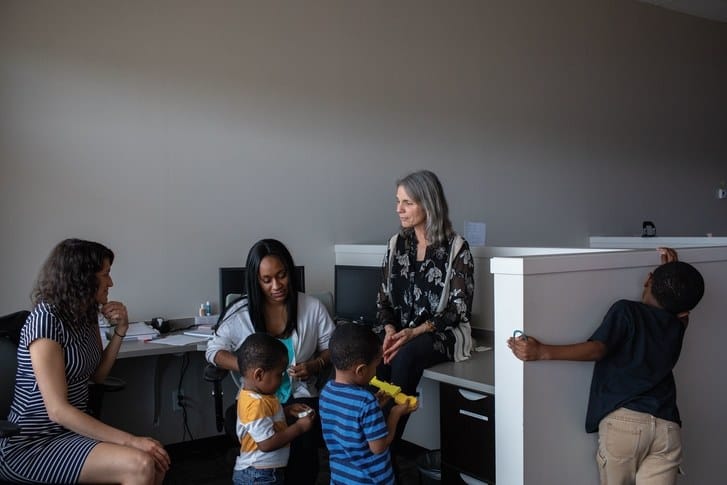Ending the injustice of automatic jail time for those who can’t afford bail
On any given night, more than 450,000 people in the United States sleep in jail cells because they don't have enough money to pay bail. The Bail Project is a self-sustaining model to make criminal justice fair for all.
Relevant Stats
Paragraph introducing any relevant stats.
.jpg)
Project
Description
The problem
There’s a profound injustice at the heart of the American legal system. Those who can afford to pay bail go home to await trial, while those that can’t, whether innocent or guilty, face an unconscionable choice: sit in jail until backlogged courts can hear their case — which can take months, or even years — or plead guilty to go free. The amounts at issue are shockingly low, often $750 or less. Cash bail criminalizes poverty, profoundly impacting low-income communities and disproportionately affecting women and people of color. Cash bail is a key driver of mass incarceration, accounting for 99 percent of all jail growth in the past 15 years.
Big idea
The Bail Project is a national effort to combat mass incarceration by disrupting the bail system, one person at a time. Building on the success of The Bronx Freedom Fund, this revolving bail fund pays bail for those who can’t afford it, helping people who would otherwise languish in pretrial detention. Data shows that 96 percent of people return to court when bailed out with philanthropic dollars, and because bail is returned at the end of a case, the fund uses each donated dollar two to three times a year. This revolving bail fund model is a critical tool to stop incarceration before it happens. It responds to the immediate needs of those locked up — preventing harm to individuals, families and communities — while also addressing the economic and racial disparities of the money bail system.
Plan
The Bail Project is scaling The Bronx Freedom Fund’s model to a national level by working closely with public defender offices and local organizations in high-need jurisdictions. The organization is comprised of a network of “Bail Disruptors” from local communities as well as a central support team. Disruptors identify bail recipients, pay bails and support clients through the legal process, while the central support team manages the revolving fund, identifies new sites and collects data and stories to support efforts for meaningful reform. The Bail Project launched in 2018 with four strategic sites: Bronx, New York; Queens, New York; St. Louis, Missouri; and Tulsa, Oklahoma. By the end of the year, it had expanded to an additional eight sites. Within five years, The Bail Project will establish 40 sites across the United States with the goal of paying bail for 160,000 people.
Why will this succeed?
The revolving bail fund model has already shown itself be a game-changer for combatting mass incarceration and the racial disparities of the American legal system. New York City data indicates that more than 90 percent of people accused of low-level offenses eventually plead guilty if they can’t post bail. Yet, data from The Bail Project’s pilot phase shows that when people are bailed out using philanthropic dollars, over 50 percent see their cases dismissed and, of the remainder, almost 40 percent have charges dropped to a violation that carries no criminal record or jail time. By working closely with public defenders and community advocates, The Bail Project’s Bail Disruptors are able to act quickly to pay bails. They are keeping families together, saving jobs and homes, and preventing human suffering.
Project Impact
Recent Updates


TED Ideas Blog
How the US bail system got so messed up
How the US bail system got so messed up
In the United States, nearly 70 percent of the people held in local jails are there for one reason: they don’t have enough money to pay bail. Here’s a look at how this came to be and what it would take to change it.


The New Yorker
America's other family separation crisis
America's other family separation crisis
Sending a mother to prison can have a devastating effect on her children. Why, then, do we lock so many women up?






.jpg)

.jpg)








.jpg)

